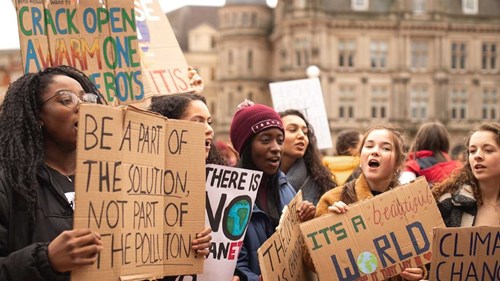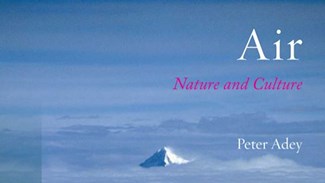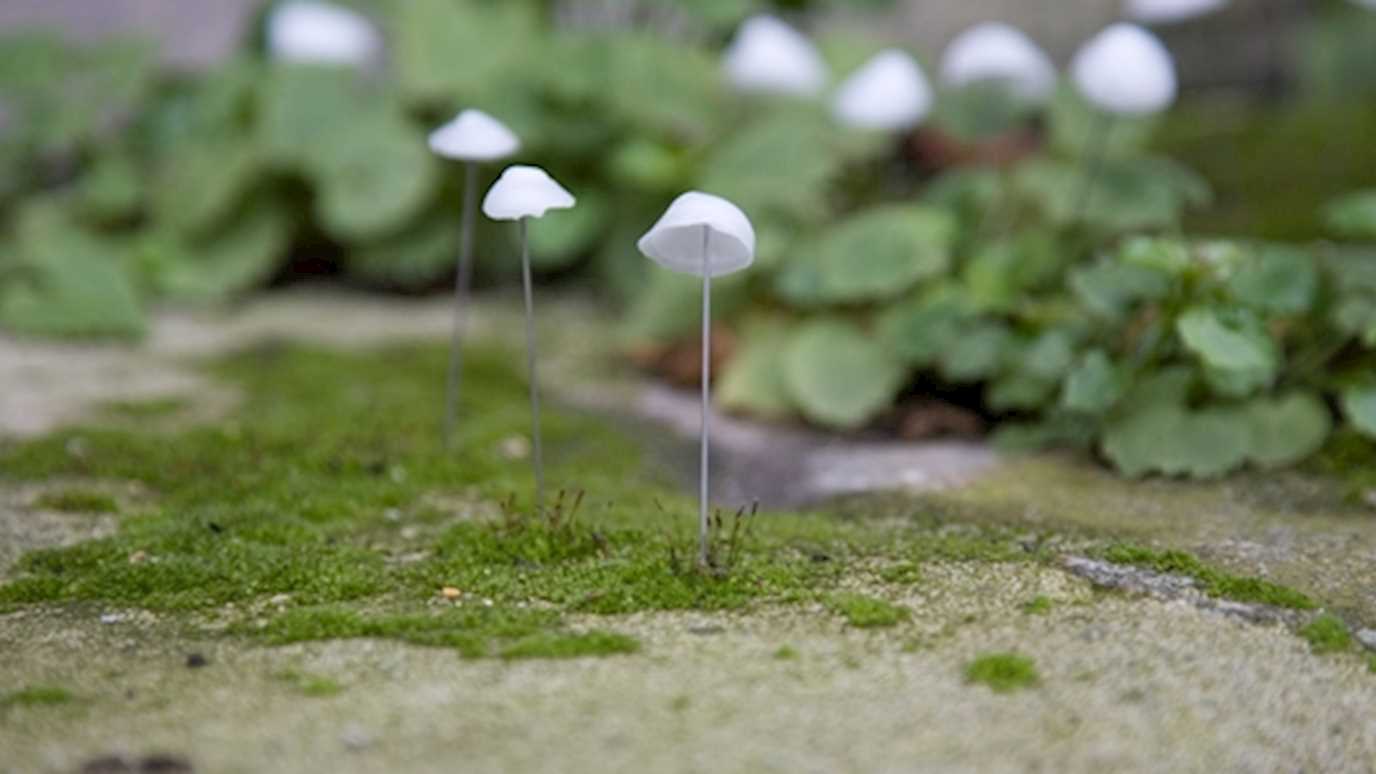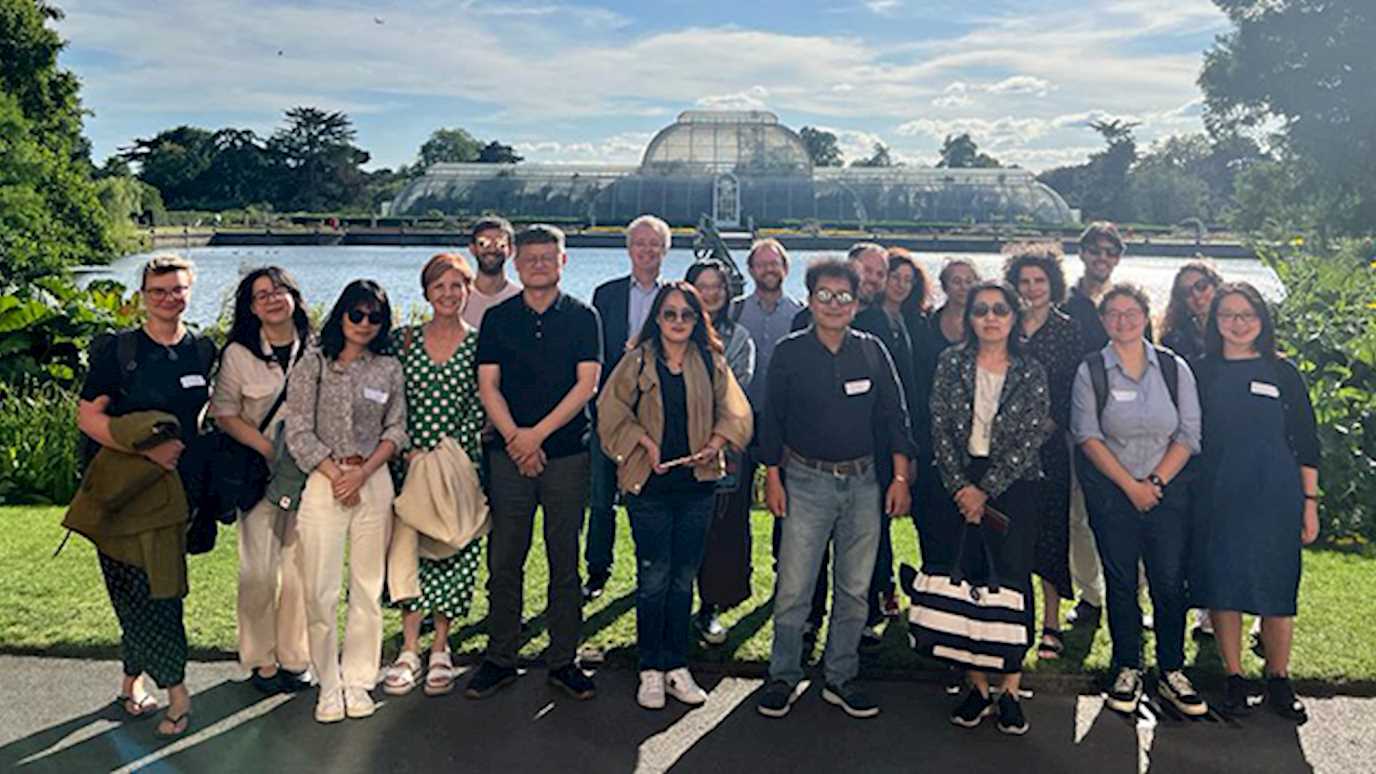Members of the Royal Holloway Centre for the GeoHumanities are involved in a wide variety of projects relating to our core themes of environmental imaginations (especially in relation to earth, air and plants); mobilities and the humanities (including studies of music, mobility and dance); creative interventions in urban and other spaces (with an emphasis on politics and practice); and heritage, culture and nature (including studies of the environmental movement, museums and collections). These projects often involvement engagement and collaboration with a range of partners in the cultural, creative and heritage sectors around the world.
Selected Projects
Advancing Feminist and Creative Methods for Sensing Air and Atmosphere
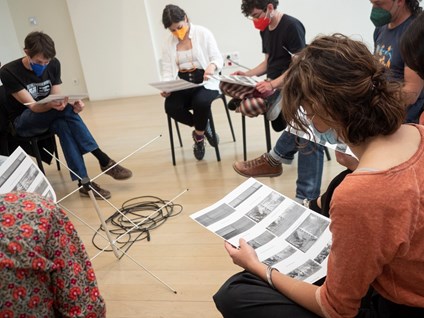
Caption: DIY satellite ground station workshop by open-weather on the occasion of the Weather Engines exhibition curated by Daphne Dragona and Jussi Parikka at Onassis Stegi, Athens, May 2022. Photography by Dimitris Michalakis.
The environmental emergencies of our time require thinking and working across disciplines, engaging communities and privileging multiple forms of knowledge, from the sensual to the scientific. Whether by forming new networks across cultural, academic and public spheres, or utilising citizen-science and open data practices, researchers are challenging black-boxed environmental knowledge making. However, doing so does not come hand in hand with equity and justice, and creative-arts practice is rarely recognised as a legitimate contribution to environmental monitoring programmes.
The aim of Sasha Engelmann's two-year AHRC fellowship is to advance feminist and creative methodologies for citizen-led research on i) air quality in the Global South and ii) weather patterns in the Global North. In a first research strand, this fellowship will evolve an Argentina based collaboration between Sasha, anthropologist Dr. Débora Swistun (UNDAV), residents of Villa Inflamable (the 'Flammable town', situated next to the largest petrochemical facility in Argentina) and the artistic Aerocene Community, among others, to develop a model of air quality sensing informed by feminist principles and creative-arts methods. In a second research strand, Sasha will collaborate with Sophie Dyer to expand open-weather, a feminist and creative practice-driven initiative that employs DIY radio technology to facilitate direct public access to transmissions from weather satellites. Having validated the project's hardware requirements in 2020- 21, the fellowship will enable Sasha and collaborators to codesign new software for citizen-led weather monitoring and grow open-weather on an international scale through cultural venues and community science networks. In a third research strand, Sasha will collaborate with Public Lab community organiser Liz Barry to co-author an open access report and articles for academic venues on the value of feminist and creative-arts methodologies for community-led environmental sensing.
An Oral History of the Environmental Movement, 1970-2020
This project’s core objective is to create a national archive of oral history recordings with environmental activists over the last fifty years. The project team, led by Dr Toby Butler, seeks to contribute to greater understanding and wider public awareness of the variety of modes of engagement with environmental issues through the words of those most intimately involved, including those whose contributions have been overlooked. This three-year project is funded by the AHRC and the project team will be working in close collaboration with the British Library, the Royal Geographical Society, Friends of the Earth and individuals, groups and organisations from across the environmental sector.
Arts of Climate Reconstruction
Arts of Climate Reconstruction, led by Bethan Lloyd Worthington, responds to ongoing excavations at Gully Cave in Somerset, which are recovering rich assemblages of fossilised plant and animal remains within an area rich in Paleolithic and Pleistocene cave sites. Through ceramic and needlepoint sculpture, writing and artists books, this practice-based project seeks to view an essentially nonhuman dwelling place through a poetic or metaphorical lens of domestic interior and exterior spaces. A podcast discussing the project can be found at: http://fermynwoods.org/fermynwoods-podcast-episode-2/
Dancing in/between Cities: Bodily Practice, Creativity and Intercultural Encounters in Latin America
Sofie Narbed’s British Academy Postdoctoral Fellowship explores the politics and possibilities of contemporary dance as a practice of relationality within and between cities, focusing particularly on artistic worlds in Quito (Ecuador) and Havana (Cuba).
Global Revolution: William Macintosh and the Geography of Radical Politics
This project by Innes Keighren examines the geographical making and mobility of radical politics in the Age of Revolution through detailed study of the authorship, global circulation, and reception of one of that era’s most controversial and widely discussed books: William Macintosh’s Travels in Europe, Asia, and Africa (1782). Using unstudied archival and bibliographical collections, the project will reveal the geography and history of Travels and show how it inspired readers on three continents, sparked debate over colonial policy and the nature of civilisation, and challenged existing understandings of the rights of individuals. Visit the project’s blog for updates and further details.
Ice Humanities
A co-edited book project (Manchester University Press 2021) by Professor Klaus Dodds and Professor Sverker Sorlin of KTH University, Ice Humanities interrogates how ice gets experienced and storified. By 2100 it is likely that many mountain glaciers will have disappeared and the Arctic Ocean turned into open water. The implications for global climate change are immense in the form of sea level change, ocean acidification and further state-change in the cryosphere. As scholars of indigenous communities have noted in places like the Arctic and mountainous regions of the world such as the Andes and Tibet, ice and snow are enriched by multi-voiced and situated accounts, which speak to community dynamics, kinship, oral memory, and relationality with the more-than-human world. We will be presenting some of the collection at the 2021 STREAMS Transformative Environmental Humanities conference: https://www.meetstreams.com/streams-2021/ice-humanities/
Music, Mobility and Migration
Music, Mobility and Migration, is an AHRC funded project led by the Royal College of Music with Royal Holloway and University Salzburg as co-investigators. The project’s main aim is to investigate the geographical, institutional and creative mobilities of musicians who migrated to Britain from Nazi-ruled Europe during the 1930s and '40s, and the contributions they made to the shaping of post-war British musical culture.
On the Trail of the Homeseeker: The Holocaust and the Cinema of the Displaced
On the Trail of the Homeseeker: The Holocaust and the Cinema of the Displaced is a forthcoming book and experimental interactive exhibition by Simone Gigliotti (History / Holocaust Research Institute, RHUL) that analyses the flight paths of Nazi-era interwar Jewish refugees and postwar displaced persons as portrayed in non-fiction cinematic material (newsreels, documentaries, fundraising shorts, and home movies). It uses geographic approaches to follow these materials' production histories, circulation, and visual geography in terms of a 'cinema of the displaced', building a mobility cartography across shifting scales of experience and global homeseeking locations.
Simone has been involved with other spatial history projects, such as the NSF-funded project, Holocaust Historical GIS, the results of which have been featured at the Spatial History Project (Stanford University) and in published form as Geographies of the Holocaust (2014). She is a research affiliate of the Holocaust Geographies Collaborative.
Plant Humanities Project
This project explores the potential of arts and humanities perspectives on plants, botanical gardens and biocultural collections to foster innovative, engaging and useful research. It seeks to make an evidence-based case for the feasibility of interdisciplinary projects linking arts and humanities researchers in UK universities with staff in botanical gardens. The first phase of the project scoped out the potential for Plant Humanities within the developing strategic collaboration between Royal Holloway and the Royal Botanic Gardens Kew (see the Final Report by Felix Driver and Caroline Cornish, August 2020). The second phase will involve national and international research, drawing on directly on related projects in the field, notably those linked to botanical gardens at Dumbarton Oaks, New York, Padua and Kew.
Shared Sacred Spaces: Saints, Relics and Sacred Objects in the Byzantine Mediterranean, 7th-15th c.
This project by Revd. David Williams explores the multiple and diverse ways in which sacred space, sacred objects, and relics have been shared by different religious groups in the Byzantine Mediterranean. Case studies include shared spaces of varying scale, from shrines and monasteries (for example, the shrine of Saint Sergius in Rusafa, northern Syria, the Basilica of Saint John the Baptist converted into the Grand Umayyad Mosque of Damascus, and the monastery of Saint Catherine in the Sinai peninsula) to entire cities (Constantinople and Jerusalem) and islands (Cyprus).
Techno-nihilism: A Geo-philosophical History of Resistance
This project by Thomas Dekeyser examines the long histories of resistance to technology across philosophical, literary and archival sources. Through the prism of techno-nihilism, the project conducts a reflection on the relations between technology, bodies and space to engage the politics of ongoing calls for technological futures.
The Mantle of the Earth
Genealogies of a Geographical Metaphor
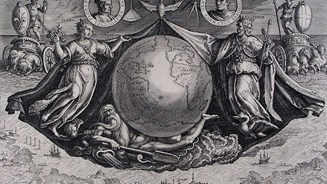
The term mantle has inspired philosophers, geographers, and theologians and shaped artists’ and mapmakers’ visual vocabularies for thousands of years. According to Veronica della Dora, mantle is the “metaphor par excellence, for it unfolds between the seen and the unseen as a threshold and as a point of tension.” The Mantle of the Earth: Genealogies of a Geographical Metaphor is an intellectual history of the term mantle and its metaphorical representation in art and literature, geography and cartography. Through the history of this metaphor from antiquity to the modern day, we learn about shifting perceptions and representations of global space, about our planetary condition, and about the nature of geography itself.
The Mobile Museum: Biocultural collections
This AHRC research project explores the mobility of biocultural collections, taking as its focus the Economic Botany collection at Kew.
The Philosophy of Plants
From 2020-2, Dr Dan Whistler (PI, Philosophy) and Dr Danielle Sands (Co-I, LLC) will be running the AHRC-funded network 'The Philosophy of Plants.' Focusing on the context, reception and contemporary significance of J.W. Goethe ’s Die Metamorphose der Pflanzen (1790), the network will explore the ways in which theoretical ideas have been determined by encounters with plants over the past two centuries by way of collaborations with partners including the Royal Botanic Gardens, Kew and the Goethe-Archiv, Weimar.
Thinking Deep: Novel Creative Approaches to the Subsurface
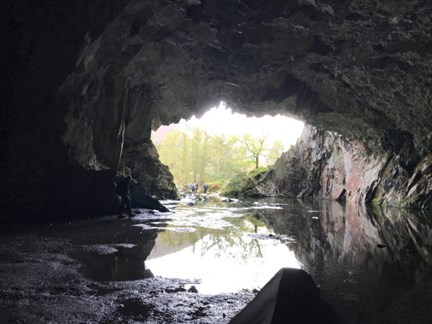
This European Research Council funded research project experiments with creative approaches to the challenges of researching the subsurface. Subsurface scholars have long argued that engaging with the challenges of understanding, using and conserving underground spaces, as well as those beneath sea and ice, requires an interdisciplinary approach. Yet, whilst such approaches often bring together science and social science approaches, rarely do they also involve arts and humanities research and practice. Thinking Deep addresses this by assembling an interdisciplinary group of researchers to explore how creative research methods and practice-based research approaches might address questions of sensing, imagining and speculating on the subsurface.
Where Light in Darkness Lies: The Story of the Lighthouse
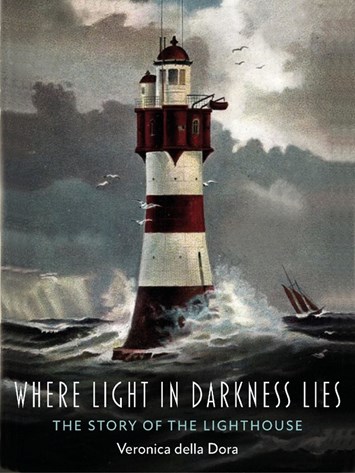
Suspended between sea and sky, battered by the waves and the wind, lighthouses mark the battle lines between the elements. They guard the boundaries between the solid human world and the primordial chaos of the waters; between stability and instability; between the known and the unknown. As such, they have a strange, universal appeal that few other human made structures possess.
Engineered to draw the gaze of sailors, lighthouses have likewise long attracted the attention of soldiers and saints, artists and poets, novelists and filmmakers, colonizers and migrants, and, today more than ever, heritage tourists and developers. Their evocative locations, isolation, and resilience, have turned these structures into complex metaphors, magnets for stories. Where Light in Darkness Lies explores the rich story of the lighthouse in the human imagination.
Contact: veronica.delladora@rhul.ac.uk
Projects Archive
Air: Nature and Culture
Air, by Peter Adey combines cultural and scientific history with a philosophical account, to explore our attempts to understand, engineer, make sense of, and find meaning in Air. Combining established figures such as Joseph Priestley, John Scott Haldane, and Marie Curie with unlikely individuals from painting, literature, and poetry, this richly illustrated book unlocks new perspectives into the science and culture of this pervasive but unnoticed substance.
Amateur Dramatics in Urban Utopias
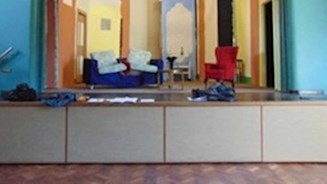
As part of the AHRC funded project "Amatuer Dramatics: Craftng Communities in time and space" Cara Gray's PhD investigates the social and cultural significance of amateur dramatics (both historical and contemporary) as a creative practice in Letchworth Garden City.
Arts for Urban Change
This project, led by Cecilie Sachs Olsen explores the possibilities and practices of participatory art in architecture and urban development. Drawing together various creative practices, from the curatorship of Oslo Architecture Triennale to a series of performative audio walks, the project aims to expand current understandings of what urban development is and can be.
Climate and creativity: Creating Collective Responses
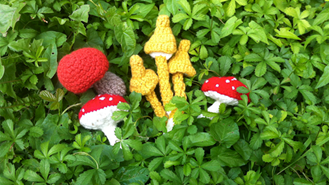
Exploring how humans know and understand their place within the environment is crucial if we are to engage communities with issues of climate change. Influencedby the growth of citizen science and competency groups as well as socially engagedarts practices, the creativity and climate change project studies and develops aseries of experiments that use creative practices to cultivate community engagement with climate change. Working for example with the “Knit n Natter” group in North East London, a project explored the knitting of climate change, investigating the social relations of humans and non-humans composed by these collective knittingpractices. Ideas of vitalism, materialism, charisma and cosmopolitics are woven together with art theory to untangle and scrutinise the many complex relationshipsbetween nonhumans, people, and place.
See also:
Contact details
Miriam.burke.2013@live.rhul.ac.uk
Collecting Natural Selection
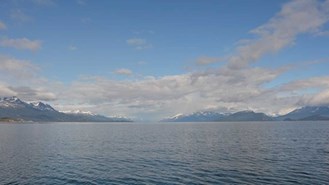
Funded by the British Academy Janet Owen is exploring the collecting journeys of Alfred Russel Wallace in New Guinea (1858) and Charles Darwin in Tierra del Fuego (1833-34)
The collecting journeys Darwin and Wallace undertook to remote parts of the globe, at formative times in their lives, played a considerable role in developing the cognitive pathways and creative imagination which spawned their ground-breaking innovative theories of natural selection. These were intense, multi-sensory journeys of physical and mental encounter with alien natural and cultural environments in the field that were unique and life-changing.
This project explores these collecting journeys in more detail by focusing on two of the remotest locations on the European nineteenth century world map: Tierra del Fuego and the Straits of Magellan which Darwin visited in 1833 and 1834, and Dorey in New Guinea which Wallace visited in 1858. They are also places where both made rare acquisitions of human cultural artefacts as well as prolific collections of natural history specimens.
These collections, associated manuscripts and published writings are being reviewed, informed by my recent personal travels to these historical theatres of collecting. I am looking for evidence of the richly stimulating and often challenging sensory environments within which they collected and connected data, observations, images, specimens, memories and ideas.
Above all I have been struck by how collecting journeys beat to a rhythm in the field, influenced both by the actions of contingency and agency. Intensive collecting expeditions of variable duration are interspersed with periods of travel (usually by sea) and rare moments of rest, reflection and planning for the next trip. I am modelling these distinctive patterns of endurance for both Darwin and Wallace, and exploring specific themes of sensory experience on these journeys in further detail, including weather conditions, physical and mental wellbeing, and the dynamics of human encounter.
Through this project I hope to raise the profile of the collections made by Darwin and Wallace as a valuable material culture resource within which sensory memories are invested that can help us reflect on how their collecting journeys as a holistic experience helped shape the development of their respective world-views. It is generously supported by a British Academy/ Leverhulme Trust Small Research Grant and by a Newnham College Phyllis and Eileen Gibbs Travelling Fellowship.
Contact details:
Creating Earth Futures
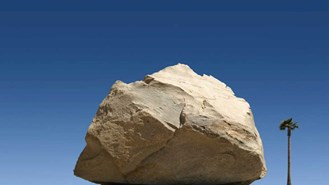
Harriet Hawkins' AHRC Leadership Fellowship explores GeoHumanities approaches to Global Environmental Change and the possibilities these hold for creating alternative Earth Futures.
Disaster Playground
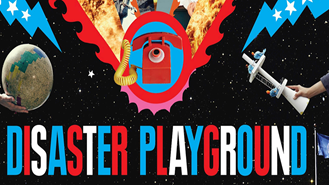
This feature film directed by Nelly Ben Hayoun follows the scientists who lead in the monitoring and deflection of hazardous Near Earth Objects and the real- life procedures in place in the event of an asteroid collision with the Earth. The original soundtrack features music by The Prodigy and the film has been screened around the world, including at the V & A, the BFI and SXSW film festival.
Drawing out Space
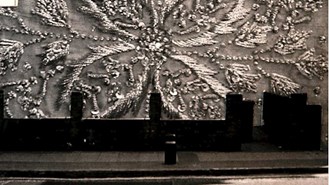
The Fashioning Diaspora Space project investigated the presence of South Asian clothing textiles in British culture in both colonial (1850s to 1880s) and post-colonial (1980s to 2000s) times. Through this dual focus it provided historical depth to contemporary debates over British Asian fashion and multiculturalism, whilst simultaneously relating the V&A's historical collections and knowledge of South Asian textiles to their contemporary contexts of reception. My part in it was to investigate visually the cross-cultural exchanges through clothing textiles in two sites, Green Street, Newham, London and the V&A. The work was shown at in an exhibition, Moving Patterns, at The Royal Geographical Society in 2009.
The project was funded by the Arts and Humanities Research Council (AHRC) through its strategic research programme on Diasporas, Migration and Identities. Based at the V&A and Royal Holloway, University of London (RHUL), the research brings together expertise from across disciplinary and institutional boundaries. Links to relevant websites are:
http://www.vam.ac.uk/content/articles/f/fashioning-diaspora-space
Project team:
The project team were: Philip Crang (Principal Investigator, Professor of Cultural Geography, RHUL), Sonia Ashmore (Research Fellow, V&A), Christopher Breward (Acting Director of Research, V&A), Rosemary Crill (Senior Curator, South Asia, V&A), Shivani Derrington (Doctoral Research Student, Department of Geography, RHUL), Felix Driver (Professor of Human Geography, RHUL), Lesley Miller (Head of Textiles, V&A) and Helen Scalway (Research Associate, RHUL).
Contact details:
Helen Scalway
hscalway@gmail.com
Joseph Conrad: Cosmopolitanism and Transnationalism
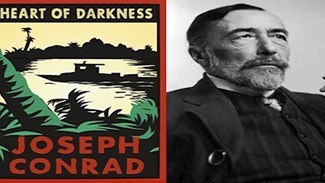
The project initially aims to investigate Conrad’s fictional and non-fictional writings in relation to the idea of cosmopolitanism. It will consider the history of the word ‘cosmopolitan’ and its use in relation to immigration law campaigns, as a coded term in anti-semitic attacks, and its association with the discourses of degeneration and ‘decadence’. It will examine the idea of ‘good’ and ‘bad’ versions of cosmopolitanism, and will examine in particular the idea of ‘critical cosmopolitanism’ as a component of modernism. It will differentiate between cosmopolitanism, multinationalism, transnationalism and internationalism. It will engage with Conrad’s representation of different kinds of cosmopolitan and multinational community in his fiction, and it will address, through his non-fiction, the larger question of how cosmopolitan/ transnational subjects position themselves politically in terms of their host country and their country of origin. The monograph will use the ‘historical formalist’ methodology developed in my last two Conrad monographs in its approach to Conrad’s writing.
This project, which will result in a monograph for Palgrave, is the first stage in a wider project on nationalism, cosmopolitanism and transnationalism. This larger project includes a collaborative volume which grows out of the monograph (particularly out of the final chapter on Conrad and transnational activism), which explores the political activism of contemporary émigré writers. This is being developed in collaboration with Dr Peichen Liao (National Cheng Kung University, Taiwan) and has received start-up funding in the form of a British Academy Mobility Award. Cosmopolitanism and transnationalism, mobility and borders, are also recurrent themes in my own poetry. Practice-based research will be included in the larger project.
Contact Details:
r.hampson@rhul.ac.uk
Knowing the Underground
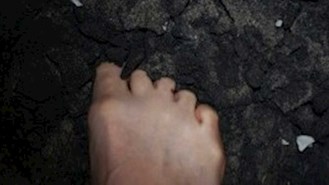
Knowing the Underground: Science, Exploration and Embodied Engagement with Subterranean Spaces.
Funded by a Leverhulme Trust Artst in Residence grant
Subterranean spaces conjure up powerful geographical imaginaries; the unknown lurks in their dark unfathomable depths; their damp volumes unsettle, disarming with their challenge to visually dominated sensory regimes and discomforting with experiences of confinement and containment. They are spaces of capitalist exploitation and scientific fascination and significance, where bones and material culture are dug up and dated, where sediments enable the recreation of past environments and the prediction of future ones, and where nature and technology come together to exploit resource rich environments and to create powerful environmental imaginaries. Taking up these themes, this residency creates a unique collaboration between artist Flora Parrott and physical and human geographers in the Geography Department at Royal Holloway, University of London.
The overall aim of the residency is: To develop a creative practice based exploration of the place of embodied engagement with underground spaces in the making of geographical knowledge past and present. In drawing together the artistic practice and research interests of Parrott and Hawkins and other geographers at RHUL this residency will explore embodied engagements with the underground both in historical records of the scientific exploration of underground spaces but also in contemporary scientific practice conducted in underground spaces.
A primary focus of the work will be developing modes of communicating interdisciplinary research by generating workshops, performance and performance lectures. Primarily the project will intersect with the Geography Department’s pioneering work with the Art and Communicating Geomorphology working group of the British Geomorphological Society.
Extending her existing work on Karst caves in Brazil and her wider work on historical and contemporary underground spaces (including as Artist in Residence at the Royal Geographical Society Collection) Parrott will develop new pieces that will contribute to her exhibitions in 2017, the focus of work being a new site-specific intervention in the RHUL Geography Department.
Project team: Flora Parrott and Dr. Harriet Hawkins
See also: http://www.floraparrott.com/
Contact details:
floraparrott@hotmail.com
Harriet.Hawkins@rhul.ac.uk
Landing: Artists & Geographers
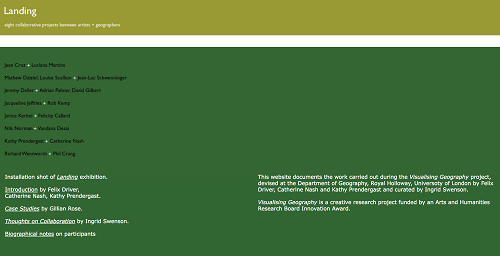
Landing was an exhibition in the Department of Geography at Royal Holloway in 2002 presenting the work of eight partnerships between visual artists and geographers and curated by Ingrid Swenson. This work was undertaken as part of a collaborative research project on Visualising Geography, devised by Felix Driver, Catherine Nash and Kathy Prendergast. An artist book from the project, including the artworks, essays (by Gillian Rose, Ingrid Swenson, Felix, Catherine and Kathy) and documentation from three project workshops with conversations about art, geography, collaboration and practice, was launched at the Royal Geographical Society in 2002. A review by Divia Tolia-Kelly was published in Cultural Geographies. The project was funded by an Arts and Humanities Research Board Innovation Award.
Landscape, Nature and the Sacred in Byzantium
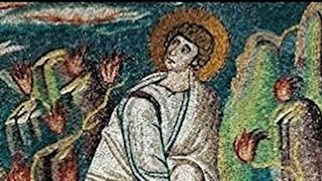
Nature is as much an idea as a physical reality. By 'placing' nature within Byzantine culture and within the discourse of Orthodox Christian thought and practice, Landscape, Nature and the Sacred in Byzantium explores attitudes towards creation that are utterly and fascinatingly different from the modern.
Drawing on Patristic writing and on Byzantine literature and art, the book develops a fresh conceptual framework for approaching Byzantine perceptions of space and the environment. It takes readers on an imaginary flight over the Earth and its varied topographies of gardens and wilderness, mountains and caves, rivers and seas, and invites them to shift from the linear time of history to the cyclical time and spaces of the sacred - the time and spaces of eternal returns and revelations.
Contact information: veronica.delladora@royalholloway.ac.uk
You can find out more about this book on the Cambridge University Press website.
Living Outside Society
A photographic survey of migrant counter-cultural identity through place and space. A case study from South-East Spain.
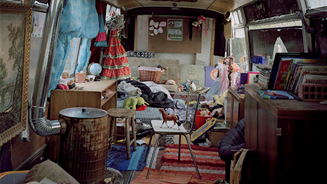
In a remote mountainous region of south-east Spain individuals gather from other parts of the world to live outside mainstream society. Identities are reinforced through coexistence in loosely structured, transient, self-regulating, intentional communities. Their makeshift dwellings and surroundings act as deliberate symbols of rejectionist ideologies. This practice based research aims to explore these identities and demonstrate that dwelling and habitat are implicitly linked to the expression of this identity primarily through the use of photographs. My practice aims to explore the complexities of different identities specifically in relation to dwelling spaces and offer new understanding about neo-nomadic migrant counter-culture. Acknowledging existing photography which looks at people in intentional communities through an ethnographic approach to their behaviour; eg; Wylie (1998), Petersen (1999), Laving (2007), and others who have focused on their harmony with nature; eg; Richardson (2003) Spero (2004/5), Kurland (2005), Fuglia ( 2012), as well as Tom Hunterʼs work on traveller culture and Joel Sternfeldʼs photographic studies of American alternative communities from past to present, my research examines international counter-cultural identities by making large format photographic studies of their self constructed dwellings and habitat and reflects on the tensions, conflicts and ambiguities in relationships between the landscape and the manmade.
Supervisor: Dr Harriet Hawkins RHUL Department of Geography
Advisor : Dr Oli Mould RHUL Department of Geography
See also: http://www.benmurphy.co.uk/#1
Contact details: pbva021@live.rhul.ac.uk
Making Suburban Faith
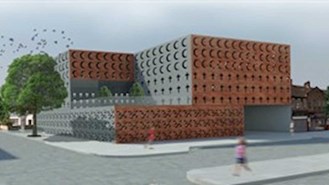
This project in collaboration with geographers UCL examines the creative practices and identities of suburban religious communities, and includes participatory work with school students, faith communities, and leading artists and creative practitioners in architecture (Mangera Yvars), photography and material culture.
Maps and Memes
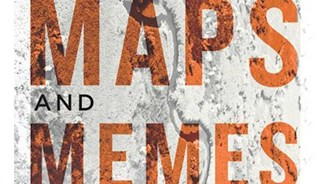
Gwilym Eades offers a critical introduction to cartography and counter-mapping in Candian indigenous contexts.
Maps and the Italian Grand Tour
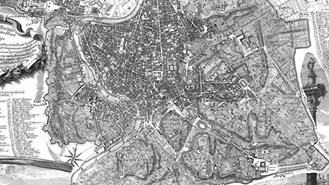
Working with the British Library Jeremy Brown's AHRC funded PhD explores the diverse roles of maps for sixteenth- to early nineteenth-century British travellers to Italy.
Methodologies of Socially Engaged Art
This AHRC Cultural Engagement Fellowship led by Danny McNally (with Peckham Platform) adopts a cultural geography approach to investigate the diversity of processes involved in socially engaged arts practice.
Mountain, Nature and Culture
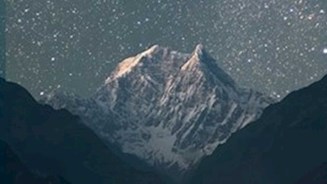
Majestic and awe-inspiring, there is nothing like the sight of a mountain on the horizon. Throughout all of human history mountains have been linked to the eternal, attracting us to their dizzying heights, stunning us with their natural beauty, and often threatening us with their dangers. Through a compelling journey to both real and imaginary peaks, this book explores how the mountain has figured in our history, culture, and imaginations.
Veronica della Dora explores the ways mountains have functioned spiritually as a boundary between life and death, a bridge between the earth and the heavens. Interlacing science, culture, and religion, she sketches the mountain as a geological phenomenon that has profoundly influenced and been influenced by the human imagination, shaping our environmental consciousness and helping us understand our—quite small indeed—place in the world. She also explores their significance as objects of human feats, as prizes of adventure and sport, and as places of serene beauty for vacationers. Magnificently illustrated and showcasing famous peaks from all around the world, Mountain offers a fascinating dual portrait of these giants in nature and culture.
Contact details: Veronica.delladora@royalholloway.ac.uk
Travels into Print
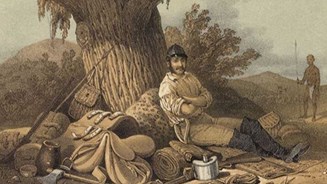
An interdisciplinary study of travel writing and publishing from the late Enlightenment to the mid- 19th century. Co-author Innes Keighren was a member of the AHRC project team that developed the research leading to the book.
What does it mean to say the British forest is always in quotation marks?
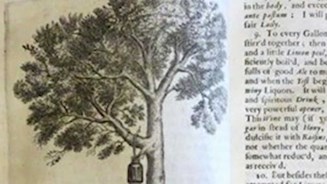
Coinciding with the anniversary of the Charter of the Forest, Amy Cutler's Leverhulme Early Career Fellowship brings attention back to the definitional acts of British forests and woodlands.










